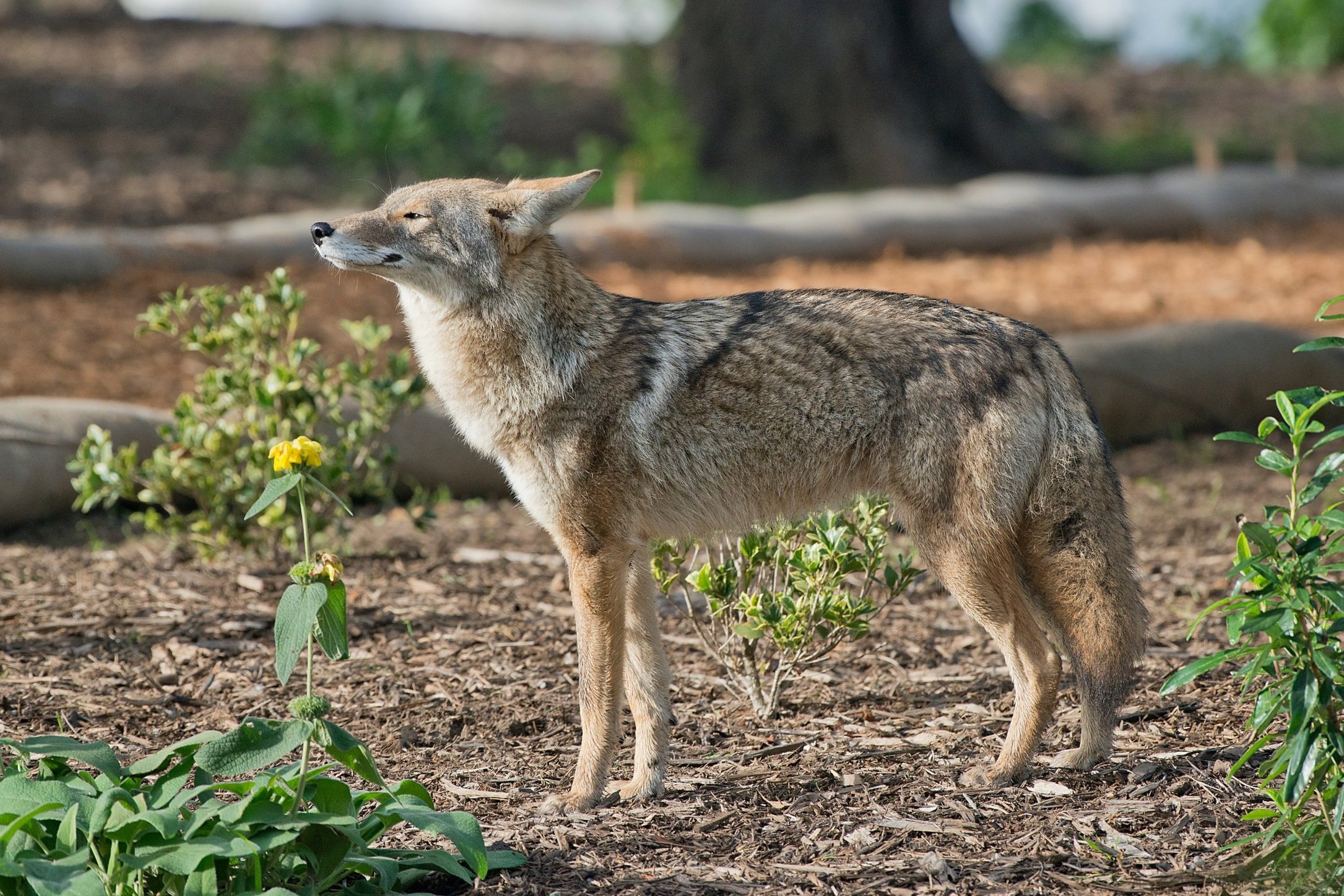Wild Paws is committed to giving a home to displaced wildlife of all species. Our mission is to rescue and provide a safe habitat for displaced wild animals while promoting coexistence and preservation of their ecosystems. We do not condone the killing or trapping of coyotes or other wildlife for personal interest or benefit.
Coyotes in MN and WI
Coyotes are extremely abundant in Minnesota and Wisconsin, living in just about every county of both states. While their historical habitat consists of grasslands and open plains, sightings of coyotes in urban areas are increasing.
Michael Heimlich. Shutterstock.
At a glance, coyotes can often be mistaken for dogs or foxes but they do have some distinct features that help differentiate them from other canids. They have tall pointed ears, a flatter head, a longer muzzle, taller legs, and a bushy tail that usually has a black tip. Their fur can vary in color from gray to red to brown. Most adult coyotes weigh around 30 pounds but they can weigh anywhere between 15-45 pounds. Despite their smaller size, coyotes can be fast and run up to 40 mph and jump up to 8 ft high.
Urban Coyotes
Urban coyotes prefer the wooded areas of golf courses or parks to residential neighborhoods and industrial areas, though it’s not unheard of to see one in a backyard. In urban areas, coyotes can be solitary but more commonly they are part of a pack. Their packs are made up of mostly close relatives and have an organized social structure, with the alpha male and female mating for life. According to the Urban Coyote Research Project, most wild coyotes have a life expectancy of under three years but can live into their teens.
Matt Knoth. Shutterstock.
Spotting a single coyote is not unusual as they typically hunt for food alone. Coyotes are opportunistic scavengers and have a lot of variety in their diet including small rodents, deer, and even fruits and vegetables. In populated areas, they will sometimes take advantage of easily accessible trash bins and on the very rare occasion, unattended smaller pets.
Ecological Role
The presence of coyotes in an area can positively affect the local ecosystem. They help aid songbird and ground-nesting bird abundance by regulating the populations of mesocarnivores such as skunks, raccoons, foxes, and feral cats that often prey on them. In both rural and urban areas, coyotes hunt small rodents, such as rabbits and rats, which reduces the need for harmful rodent control, such as poison, that can negatively impact other species’ populations. Population management of deer and rodents provided by coyotes helps reduce the spread of zoonotic diseases, like Lyme disease. Their opportunistic scavenging also keeps the local environment clean since coyotes will take care of animal carcasses.
Sebartz. Shutterstock.
Coyote-Human Interactions
Healthy coyotes tend to avoid people and domestic animals but pets can be attacked. There are a few steps you can take to reduce encounters and successfully coexist with them.
Do not try to feed or tame coyotes.
Do not leave food outside.
Ensure your garbage bins are securely shut.
Keep compost in a secure bin.
Keep a close eye on your small dog, cat, or other pet when outside and keep them on a leash in an area where a coyote could be to prevent them from running into a coyote, who may perceive them as a threat.
Clear away brush from the outside of your home or building and block off any outside-accessible crawl spaces.
Killing contests in MN and WI
“Killing contests” all over the country are a threat to the wild coyote population. A killing contest is an inhumane organized event in which participants compete for prizes for killing the highest number of the largest animals within a specified time period. These types of contests are not at all effective at managing populations of wildlife, they are not backed or supported by science, and are solely for personal gain. More states are beginning to ban these contests, but there are still hundreds happening every year, and MN and WI have yet to ban these events.
At Wild Paws, we do not condone these types of contests and believe they should be banned across the country. We encourage anyone who hears of these contests occurring to call the hosting establishment and explain your disapproval, as well as support both a state and a federal ban on killing contests.
Here are links to both state and federal petitions:
What can you do to help?
If you see a coyote in the wild and it is not avoiding human contact, it is best to scare it away by shouting and yelling. If you come across an injured coyote, call the DNR immediately.
References
“Wisconsin Coyotes”. Wisconsin-WI.com. Web.
“Urban Coyotes”. Minnesota DNR. Web.
“Facts about Wildlife Killing Contests'‘. Humane Society. Web.
“Protecting Coyotes at Risk”. Predator Defense. Web.
“Learn about North America’s ‘Song Dog’”. Project Coyote. Web.
Coyote Carnage: The Gruesome Truth about Wildlife Killing Contests. Yale Environment 360. Web.
“All About Coyotes”. Urban Coyote Research Project. Web.
“Coyote Ecology”. Coyote Watch Canda. Web.




